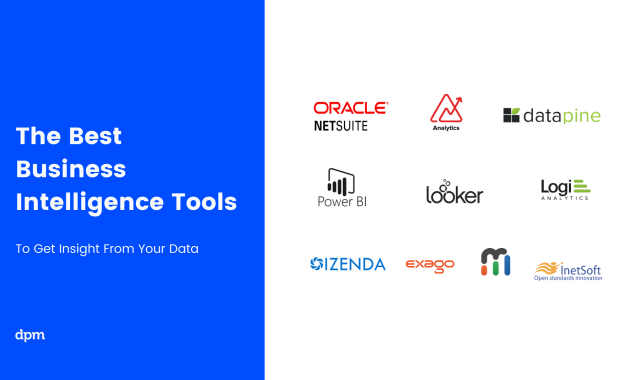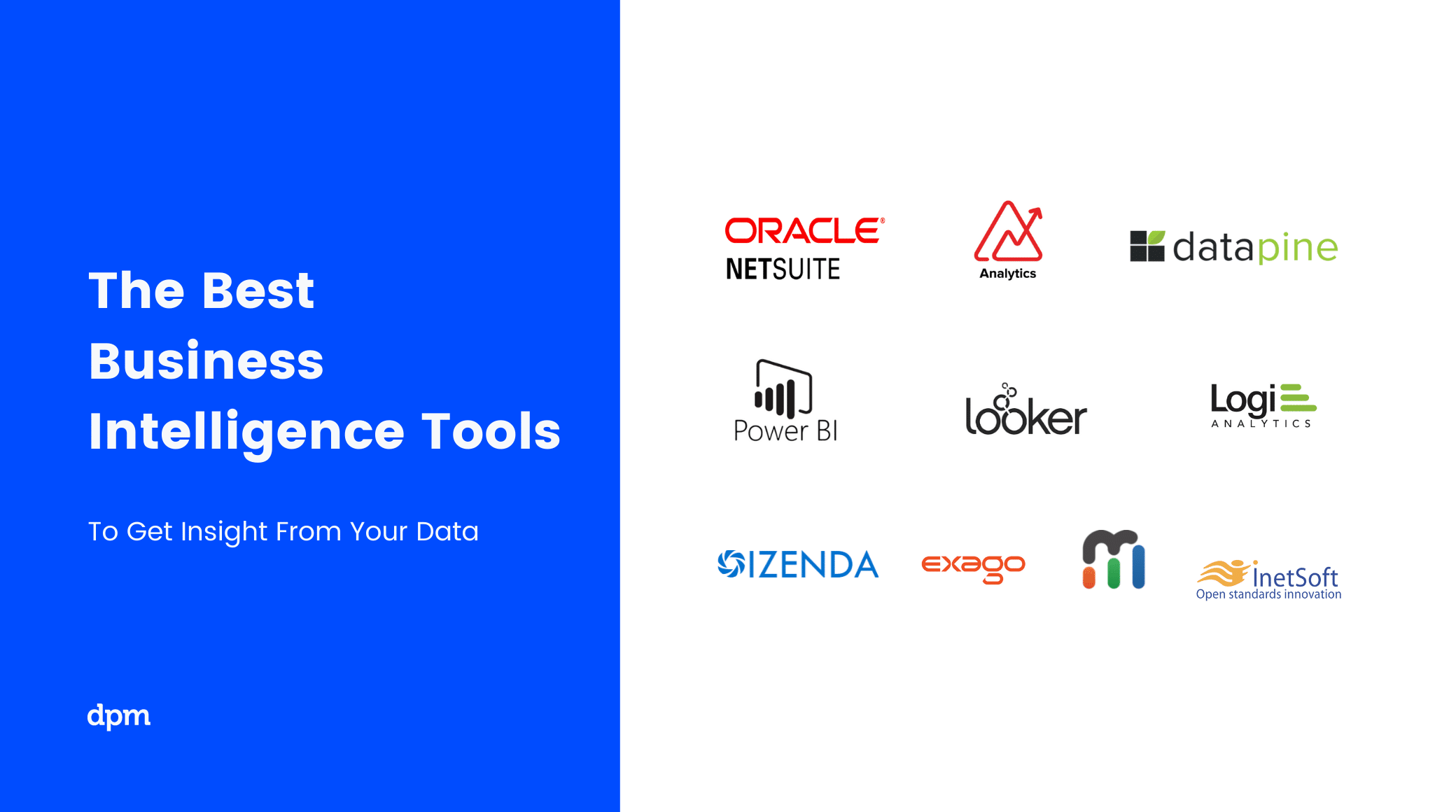
Winning with 3 Business Intelligence Tools Used by Experts
In today’s data-driven world, businesses are drowning in information. The challenge isn’t a lack of data, but rather the ability to extract meaningful insights from it. This is where Business Intelligence (BI) tools come into play. These tools empower organizations to analyze data, identify trends, and make informed decisions. This article explores how to succeed with business intelligence and showcases three essential tools favored by industry experts.
The power of informed decision-making is undeniable. Organizations that embrace BI can gain a significant competitive advantage. They can understand customer behavior, optimize operations, and predict future trends. This leads to improved profitability, increased efficiency, and better strategic planning. This article will help you understand how to leverage the power of business intelligence and how to utilize specific tools.
The Core of Business Intelligence: Understanding the Fundamentals
Before diving into specific tools, it’s crucial to grasp the fundamental concepts of BI. BI is a broad term encompassing the processes, technologies, and applications used to collect, analyze, and present business information. It transforms raw data into actionable insights. Key components include data warehousing, data mining, online analytical processing (OLAP), and reporting. Data warehousing stores data from various sources. Data mining uncovers patterns and trends. OLAP enables multi-dimensional data analysis. Reporting presents findings in a clear and concise manner.
Successful BI implementation requires a clear understanding of business needs. Identify specific questions you need to answer. Define key performance indicators (KPIs). Select the right data sources. Choose the appropriate BI tools based on your requirements. A well-defined strategy is essential for maximizing the value of BI initiatives. Remember that BI is not just about technology. It’s about using data to improve decision-making and achieve business goals. Business intelligence is essential in the modern business landscape.
Tool One: Tableau – The Visualization Powerhouse
Tableau is a leading BI tool renowned for its data visualization capabilities. It allows users to create interactive dashboards and reports. These visualizations make complex data easy to understand. Tableau’s intuitive drag-and-drop interface simplifies data analysis. Users can quickly explore data, identify trends, and share insights. It supports connections to a wide range of data sources, including databases, spreadsheets, and cloud services. This flexibility makes it a versatile solution for diverse business needs. Tableau is a favorite among data analysts and business users alike.
Tableau’s strength lies in its ability to transform raw data into compelling visual stories. Users can create charts, graphs, and maps. These visualizations highlight key trends and patterns. Interactive dashboards allow for deeper exploration of the data. Tableau also offers robust collaboration features. Users can share dashboards and reports with colleagues. This fosters data-driven decision-making across the organization. Tableau is a powerful tool for any business seeking to gain a competitive edge. Winning with business intelligence starts with tools like Tableau.
Key Features of Tableau
- Data Visualization: Create interactive charts, graphs, and maps.
- Data Connectivity: Connect to a wide variety of data sources.
- User-Friendly Interface: Drag-and-drop functionality for easy analysis.
- Collaboration: Share dashboards and reports with colleagues.
- Mobile Access: View dashboards on mobile devices.
Tool Two: Microsoft Power BI – The Integrated Solution
Microsoft Power BI is a comprehensive BI platform that offers a wide range of features. It integrates seamlessly with other Microsoft products, such as Excel and Azure. Power BI provides powerful data modeling, analysis, and visualization capabilities. It is a cost-effective solution, especially for organizations already using Microsoft products. Power BI is a popular choice for businesses of all sizes. Its user-friendly interface and extensive feature set make it accessible to a broad audience. Understanding Power BI is key to winning with business intelligence.
Power BI allows users to connect to various data sources. These include databases, cloud services, and spreadsheets. Users can then transform and model the data. They can create interactive dashboards and reports. Power BI’s natural language query feature allows users to ask questions in plain English. The platform also offers robust security features. This ensures that sensitive data is protected. Power BI is a versatile and powerful tool for data analysis and reporting. It is a great option for businesses looking for an integrated BI solution. This is another tool utilized by experts for winning with business intelligence.
Key Features of Microsoft Power BI
- Data Modeling: Create complex data models.
- Data Transformation: Clean and prepare data for analysis.
- Data Visualization: Create interactive dashboards and reports.
- Integration: Seamlessly integrates with other Microsoft products.
- Natural Language Query: Ask questions in plain English.
Tool Three: Qlik Sense – The Associative Engine
Qlik Sense is a unique BI tool known for its associative engine. This engine allows users to explore data in a more intuitive way. It highlights relationships between data points. Qlik Sense helps users uncover hidden insights. Its data visualization capabilities are also impressive. Qlik Sense is a good option for businesses that need to analyze complex data sets. Qlik Sense offers a different approach. It focuses on data discovery and exploration. Qlik Sense is a valuable tool for winning with business intelligence.
Qlik Sense’s associative engine allows users to explore data in a non-linear fashion. Users can easily see how different data points are related. This facilitates a deeper understanding of the data. Qlik Sense also offers a wide range of data visualization options. Users can create interactive dashboards and reports. Qlik Sense supports connections to various data sources. This includes databases, cloud services, and spreadsheets. Qlik Sense is a powerful tool for data discovery and analysis. It’s particularly well-suited for businesses with complex data needs. This tool is often preferred by those winning with business intelligence.
Key Features of Qlik Sense
- Associative Engine: Highlights relationships between data points.
- Data Visualization: Create interactive dashboards and reports.
- Data Discovery: Explore data in a non-linear fashion.
- Data Connectivity: Connect to a variety of data sources.
- Mobile Access: View dashboards on mobile devices.
Choosing the Right Tool: A Comparative Analysis
Selecting the right BI tool depends on your specific needs and priorities. Consider factors like data sources, budget, and user skill levels. Tableau excels in data visualization and ease of use. Microsoft Power BI offers a comprehensive and integrated solution. Qlik Sense provides a unique associative engine for data discovery. Evaluate each tool based on its features, pricing, and support. Consider a trial period to test the tool. This will help you determine if it is a good fit for your organization. Careful consideration is essential for winning with business intelligence.
Tableau is ideal for businesses that need to create visually appealing dashboards and reports. Power BI is a strong choice for organizations already invested in the Microsoft ecosystem. Qlik Sense is a good option for businesses that need to analyze complex data sets and uncover hidden insights. Ultimately, the best tool is the one that best meets your specific requirements. The right tool is essential for winning with business intelligence.
Implementing BI: Best Practices for Success
Implementing BI successfully requires a strategic approach. Start by defining your business goals and identifying key metrics. Select the right data sources and ensure data quality. Choose the appropriate BI tools based on your requirements. Provide adequate training and support for your users. Foster a data-driven culture throughout your organization. Regularly review and update your BI strategy. This ensures it aligns with your evolving business needs. Following best practices is crucial for winning with business intelligence.
Data governance is essential for maintaining data quality and integrity. Establish clear data governance policies and procedures. Implement data quality checks and validations. Ensure data security and privacy. Promote data literacy throughout your organization. Encourage employees to use data to inform their decisions. Regularly assess the effectiveness of your BI initiatives. Make adjustments as needed to optimize your results. Success with business intelligence requires a proactive approach.
Conclusion: The Future of Business Intelligence
Business Intelligence is constantly evolving. New technologies and trends are emerging. The demand for data-driven insights is growing. Businesses that embrace BI will gain a significant competitive advantage. By leveraging the right tools and strategies, organizations can unlock the power of their data. This leads to improved decision-making, increased efficiency, and greater profitability. The future of business is inextricably linked to business intelligence. Winning with business intelligence is no longer optional; it’s essential.
In summary, Tableau, Power BI, and Qlik Sense are all powerful BI tools. Each offers unique strengths and capabilities. Choosing the right tool depends on your specific needs and priorities. Implementing BI successfully requires a strategic approach and a commitment to data-driven decision-making. By embracing BI, businesses can unlock the full potential of their data and achieve their goals. This is how experts achieve winning with business intelligence.
[See also: Related Article Titles]

